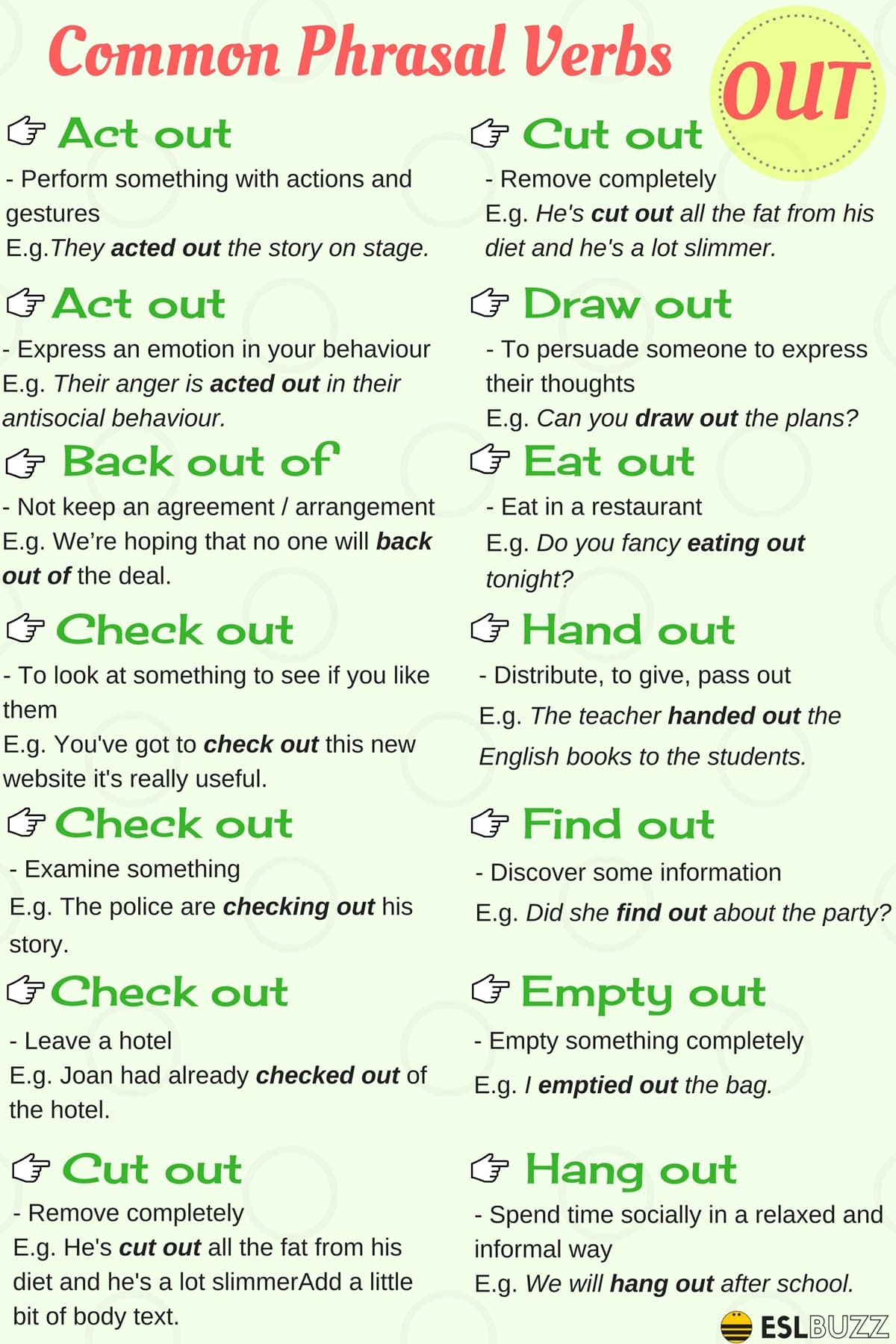

If you searched the term ‘ Phrasal Verbs’ right now on Google, you would find dozens of phrasal verbs lists broken down by their part of speech: verb, preposition, or adverb. Plus, there are some tricks that will help you learn and remember them faster. As you expose yourself to the English language at an advanced level, you’ll pick up more and more phrasal verbs. You don’t have to know them all to speak English fluently, and most of the time, you’ll be able to understand their meaning through context. With thousands of phrasal verbs separated into four different categories and multiple definitions, how can anyone be expected to remember them all? I’m going to look after my little brother this weekend.Will you look after my cat while I’m gone?.‘ Look after’ ( take care of) is an example of an inseparable phrasal verb. I’m going to hand it in after the class.‘ Hand in’ ( to submit something) is an example of a separable phrasal verb. Inseparable phrasal verbs must remain together to be understood.Separable phrasal verbs can be separated in a sentence with a direct object in between the phrase.In addition, phrasal verbs are categorized into separable and inseparable. The phrase ‘ take off’ means to leave the ground and does not require an object. I’m going to go watch the plane take off.In this context, ‘ take off’ means to remove something and requires an object to be understood. ‘ Take off’ is a great example of this concept. In addition, there are some phrasal verbs that are considered both transitive and intransitive based on their meaning. The phrase ‘come over’ is an example of an intransitive phrasal verb. Intransitive phrasal verbs do not need a direct object.įor example, the phrase ‘ ran into’ is a transitive phrasal verb because you can’t leave the phrase as is.

Transitive phrasal verbs must have a direct object that comes after the phrase.Like regular verbs, phrasal verbs are categorized into transitive and intransitive. Transitive and Intransitive Phrasal Verbs Let’s all just calm down and stop arguing. Hey, we’re going to hang out at the park. Hang out – To casually spend time in a particular place.I had to give up cigarettes when I decided to start running again. Here are some common examples you should be familiar with as an intermediate level English speaker: Phrasal verbs can have multiple meanings.It must be taken as a whole to be understood. The phrase cannot be understood based on the individual meanings of the words in the phrase.Phrasal verbs have some interesting ways of usage: It can be broken down (phrasal verb meaning to divide into multiple parts to give detail) into these elements: What is a Phrasal Verb?Ī phrasal verb is a phrase that consists of two or three words typically used in an idiomatic context. In this article, we will define phrasal verbs, provide some tips and tricks to remember them, and give you a common list tailored for advanced and business English speaking. Even native speakers can’t recall every example because people typically learn them through exposure.īut, if you want to advance your English, you must have a basic understanding of their use along with a working list of common phrasal verbs.

No one expects you to know or remember them all.


 0 kommentar(er)
0 kommentar(er)
